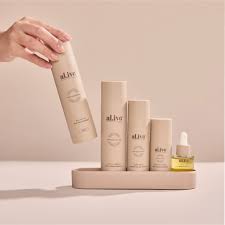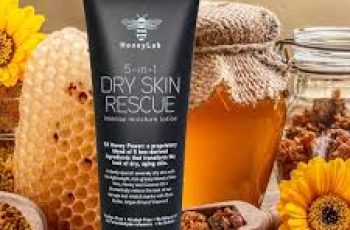
Can I Use Lactic Acid and AHA Together? Here’s What You Should Know
If you’re a fan of skincare acids, you’ve likely come across lactic acid and wondered how it fits with other AHAs (Alpha Hydroxy Acids). Can they be used together? Should they be? Let’s break it down.
With so many active ingredients promising to improve texture, clear breakouts, and boost glow, it’s easy to overdo things. That’s why understanding how ingredients interact is key to healthy skin.
In this post, we’ll explore lactic acid, how it works, how it fits with other AHAs, and how to use it in a routine that works for you.
What Is Lactic Acid?
Lactic acid is one of the most well-known AHAs, used in skincare for its gentle exfoliating and hydrating properties.
Historically, it was discovered in sour milk by Carl Wilhelm Scheele in the 18th century and later developed for skincare by Boehringer Ingelheim.
Unlike stronger acids, lactic acid has a larger molecular structure. This makes it less likely to penetrate deep and cause irritation.
It’s considered gentler than glycolic acid, making it a great starter AHA for sensitive or dry skin types.
Here are some of the benefits of using lactic acid:
Fades fine lines and wrinkles by promoting skin cell turnover and collagen production.
Strengthens the skin barrier by drawing and locking moisture into the skin’s outer layer.
Unclogs pores and removes dead skin cells, bacteria, and oil from the skin’s surface.
Brightens dull skin and improves rough or uneven texture.
Fights breakouts by clearing debris and reducing the chance of clogged pores.
Safe for sensitive skin, thanks to its mild exfoliating action and hydrating properties.
What Are AHAs?
Alpha Hydroxy Acids (AHAs) are a group of water-soluble acids derived from sugary fruits and milk.
Common AHAs include glycolic acid, mandelic acid, citric acid, and lactic acid.
They work on the skin’s surface by breaking the bonds that hold dead skin cells together, making it easier to remove them.
This exfoliation encourages brighter, smoother skin and helps other skincare products absorb more effectively.
Each AHA differs in strength and penetration depth. Lactic acid, for example, is milder than glycolic acid.
Can You Use Lactic Acid with Other AHAs?
Yes, you can use lactic acid with other AHAs, but you need to do it carefully.
Using multiple acids increases the risk of irritation, especially if you have sensitive skin or are new to chemical exfoliation.
If you want to combine lactic acid with other AHAs like glycolic or mandelic acid, start slow.
Try these strategies:
Option 1: Use Different Acids at Different Times of Day
Apply lactic acid in the morning and use another AHA, such as glycolic acid, in the evening.
This gives your skin time to adjust and avoids layering too many actives at once.
Option 2: Wait Between Applications
If you want to use both acids in the same routine, apply one and wait 10 to 15 minutes before the next.
This allows the first acid to absorb and prevents overwhelming your skin.
Option 3: Alternate Days
Use lactic acid on one day and another AHA on the next. This helps reduce the risk of over-exfoliation and keeps your skin barrier healthy.
What Should Lactic Acid Not Be Mixed With?
There are certain ingredients that shouldn’t be used with lactic acid—or only with caution.
Avoid the following combinations unless guided by a skincare expert:
Retinol + Lactic Acid: Both increase skin turnover and sensitivity. Together, they may cause peeling or irritation.
Vitamin C + Lactic Acid: The pH levels of these ingredients conflict and may reduce effectiveness or cause sensitivity.
BHA + Lactic Acid (e.g., Salicylic Acid): These can be used together in small doses, but overuse may damage the skin barrier.
If you’re just starting out, it’s best to stick with one exfoliating acid at a time.
Always patch test new ingredients and introduce them slowly into your routine.
Can I Use Lactic Acid After an AHA or BHA Peel?
No, it’s not recommended to use lactic acid right after a chemical peel—especially professional peels with strong AHAs or BHAs.
Peels are already high-concentration exfoliants and leave your skin sensitive, vulnerable, and healing.
Adding more acids immediately after can lead to:
Severe dryness, Redness, Burning sensations, Compromised skin barrier
Instead, opt for calming and hydrating ingredients like:
Hyaluronic acid, Ceramides, Panthenol, Aloe vera
Wait at least 3 to 5 days after a peel before reintroducing lactic acid or other exfoliants.
Is It OK to Use Lactic Acid Daily?
Yes, you can use lactic acid daily, but with caution.
Low-strength lactic acid products, such as cleansers or toners, are usually safe for daily use.
Products with higher concentrations—like serums or exfoliating masks—should be used 2–3 times a week at first.
Using lactic acid too often may cause:
Redness, Flaking, Itching, Sensitivity, Over-exfoliation
Start with a low concentration (around 5%) and work your way up as your skin adjusts.
Always follow with a moisturizer and broad-spectrum SPF 30–50, especially during the day.
Does Lactic Acid Cause Acne?
It can, especially during the initial detox phase.
When first using lactic acid, you may experience a purging period. This occurs as the acid speeds up cell turnover.
As pores clear, buried impurities rise to the surface—causing breakouts before things get better.
This is a normal and temporary reaction, typically lasting 1–2 weeks.
However, if breakouts persist beyond this, you may be reacting to the product. In that case, stop use and consult a dermatologist.
For acne-prone skin, consider combining lactic acid with niacinamide or salicylic acid, but always introduce actives slowly.
How to Add Lactic Acid to Your Skincare Routine
Lactic acid is available in several forms, including:
Cleansers, Toners, Serums, Masks, Moisturizers
The best way to introduce it depends on your skin type and concerns.
For Beginners
Start with a lactic acid cleanser or toner used 2–3 times a week. These rinse-off products are gentler and easier to tolerate.
For Intermediate Users
Upgrade to a lactic acid serum once your skin shows no signs of irritation.
Apply it after cleansing and toning, then follow with a moisturizer and sunscreen in the morning.
For Advanced Users
Use lactic acid-based masks or peels weekly for a deeper exfoliation. These contain higher concentrations and deliver more noticeable results.
Pro Tip
Always apply your skincare from thinnest to thickest: cleanser → toner → serum → moisturizer → SPF.
This helps active ingredients like lactic acid penetrate properly and avoids layering problems.
When Should You Use Lactic Acid?
Use lactic acid when your skin feels:
Dull, Rough, Dehydrated, Uneven in tone, Prone to breakouts, Experiencing mild pigmentation
It’s especially useful during cooler months when skin becomes dry and flaky.
Apply it in the evening for best results, and avoid using it right after sun exposure or on freshly shaved skin.
Final Thoughts
Lactic acid is a versatile, gentle AHA that plays well with most skincare routines when used correctly.
Yes, you can combine it with other AHAs—but only after your skin builds tolerance. Start slow, space out applications, and pay attention to how your skin reacts.
Avoid using it after intense treatments like chemical peels and always pair it with hydration and SPF protection.
If you’re unsure whether lactic acid is right for you, or how to pair it with other acids like glycolic or salicylic, don’t hesitate to ask a skincare expert.
For more personalized help, skincare tips, and product recommendations, visit us on Instagram at @Procoal. Our experts are happy to chat in the DMs!


